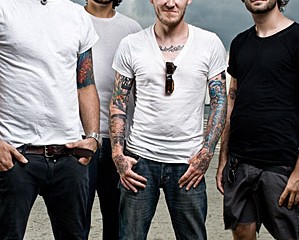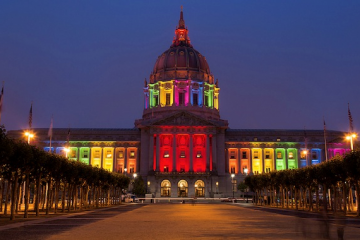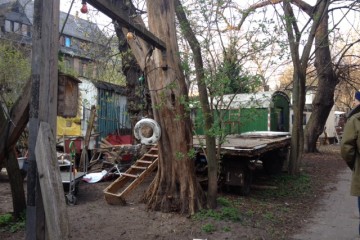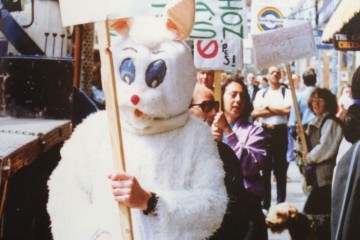The City That Was: Before the Nanny State, There was Playland
In The City That Was, Bohemian Archivist P Segal tells a weekly story of what you all missed: the days when artists, writers, musicians, and unemployed visionaries were playing hard in the city’s streets and paying the rent working part time.
In recent news, a mother got in trouble for letting her kid go to the park without adult supervision. Kids these days need social secretaries to schedule their play dates and athletic, cultural, and other improving activities after school. When I was a kid, children could get on a MUNI bus and go somewhere for fun by themselves, and when my friends and I did that, we usually headed for Playland.
Playland at the Beach was already crumbling and funky when I was a child. It was full of sailors in town looking for trouble, a place run by old carnies and retirees from the circus. Two dollars got you in and got you an It’s-It, which were only made at a concession next to the Cliff House. It was cheaper than a babysitter for parents. No one worried about abductions or sexual predators, even my own repressive parents.
Playland had an ancient roller coaster and the merry-go-round that now occupies a corner of Yerba Buena Gardens. The rides were great, but we always headed straight for the Fun House, where the animatronic Laughing Sal cackled endlessly from her glassed-in bay window near the roof.
The always creepy Laughing Sal
In this age of the litigation lifestyle, Playland would be sued out of existence, and the Fun House would have had predatory lawyers licking their chops. You entered the building and walked over small holes in the hardwood floor, through which blasts of steam rose at random intervals. Uninitiated women wearing dresses had their skirts blown up above their heads for the delight of visiting seamen.
Once inside, there were lots of potentially dangerous things to do. There was a giant flat wheel that spun around a central spindle. When it wasn’t moving, you got on and put your back to the spindle, waiting for the action. When a bunch of people were on it, it suddenly started spinning, slowly, and then faster. One by one, the people on it got spun off, sliding across the surface and the surrounding polished floor until they crashed into a wall. Staying on it was impossible.
You walked by mirrors that made you unnaturally skinny or huge en route to things like the giant cylinder that turned constantly, inviting people to walk from one end to the other without falling down, or the section of floor where pieces shimmied, raised, and fell, daring you to get across it without landing on your ass again. You spent a lot of time on your ass at the Fun House.
The biggest Fun House attraction of all was the 4-story wooden slide, its surface kept highly polished by the endless asses sailing down. You climbed the flights of stairs to the top, where you were handed an old potato sack to sit on, and then you went down, down, down and over a bunch of humps that lifted you and the potato sack into the air momentarily. When you crashed at the bottom, you climbed the stairs again to repeat the adrenaline rush.
Needless to say, people did not wear helmets, kneepads, or elbow protectors in those days, at Playland or anywhere else. Risk taking was part of the training for life, and if you got injured at Playland, it was on you for going there, not on them for providing hazards for your entertainment. It was kind of like tickets to Burning Man that say you could possibly croak—except in those days, no warning was needed.
Part of being a member of society, before the nanny state, was figuring out the risks when you did something and taking responsibility for the consequences. These days we’re overwhelmed with warnings, protections, bureaucratic oversights, constant parental supervision, and lawsuits. It’s a duller and angrier world, full of fear and predators, and a much less interesting time to be a kid.
Years after Playland closed, I met one of its owners, John Wickett. What he did with himself when the fun was over is another story for another week. Coming some time soon: the John Wickett Museum of Exotica.
I took the photo of the sad, rusty monument to Playland, at the corner of Cabrillo and La Playa. The photo of Laughing Sal, by John King, was snatched from the Internet.










